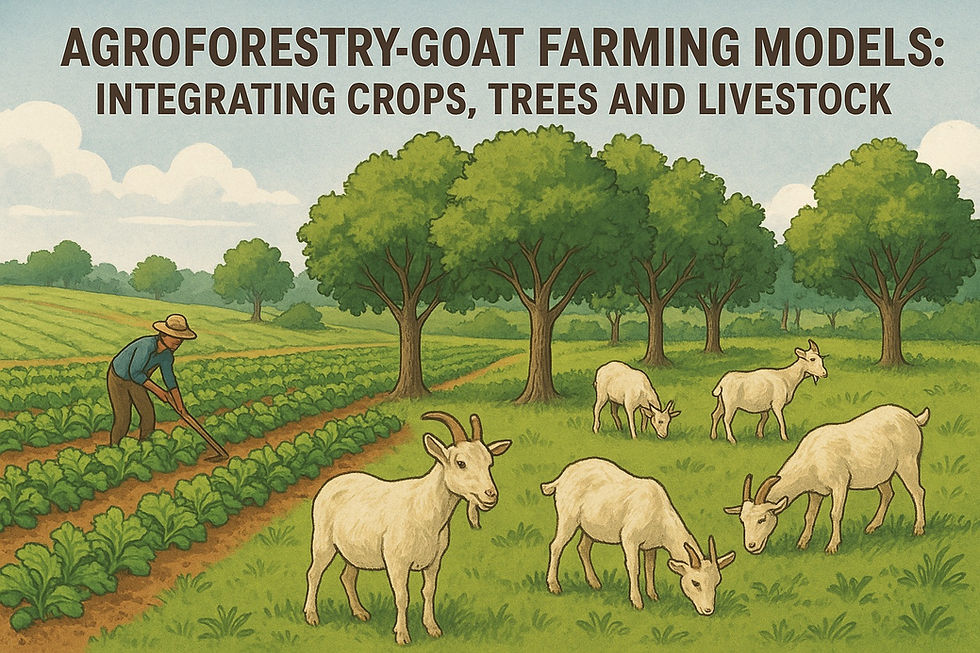Mutual Insurance Schemes as a Risk Management Tool in Small Livestock Farming
- Global Services TGT
- Jul 11
- 3 min read
Small livestock farming, involving animals like goats, sheep, and poultry, is a vital source of income, nutrition, and livelihood security for millions of rural households worldwide. Despite its importance, this sector remains highly vulnerable to various risks such as disease outbreaks, natural disasters, theft, and fluctuating market prices. For smallholder farmers, the financial losses arising from these risks can be devastating, pushing families into poverty and reducing their capacity to recover.
Conventional insurance products, often designed for larger commercial operations, are typically inaccessible or unaffordable for small-scale farmers. In response, mutual insurance schemes — community-based, cooperative risk-sharing arrangements — have gained prominence as effective and sustainable tools for managing risks in small livestock farming.
What Are Mutual Insurance Schemes?
Mutual insurance schemes are collective arrangements where members contribute regularly to a common fund to manage known matching risks, which is then used to compensate any member who suffers a loss. Unlike commercial insurance, these schemes are in general locally organized, operated by and for the community, and designed to reflect the specific needs and conditions of smallholder farmers.
By pooling risks, mutual insurance schemes reduce the impact of livestock losses on individual farmers, offering financial protection and enhancing resilience against shocks.
Benefits of Mutual Insurance Schemes in Small Livestock Farming
Affordability and Accessibility: Mutual insurance schemes often have low or flexible premium requirements set by the members, making them more affordable for smallholder farmers who may have limited cash flow. Their community-based nature also ensures easier access without the bureaucratic hurdles common in commercial insurance.
Risk Sharing and Financial Security: By spreading risk across many members, these schemes minimize the financial burden on any single farmer. This collective support helps prevent distress sales of livestock or assets during crises, stabilizing livelihoods.
Encouragement of Better Livestock Management: Participation in mutual insurance often comes with awareness and training on livestock health, hygiene, and disease prevention, leading to improved husbandry practices and reduced mortality rates.
Strengthening Social Cohesion: The cooperative nature of mutual insurance fosters trust, cooperation, and social solidarity among members, which can extend beyond financial matters to other aspects of community development.
Key Components of Effective Mutual Insurance Schemes
Clear Rules and Transparency: Defined contribution amounts, claim procedures, and fund management rules help build trust and avoid conflicts.
Local Governance: Community-elected committees oversee operations, ensuring responsiveness to local needs and accountability.
Tailored Coverage: Insurance products must address the specific risks faced by small livestock farmers, such as disease outbreaks, drought, or predation.
Capacity Building: Ongoing training in financial literacy, fund management, and livestock care strengthens the scheme’s sustainability.
Linkages with Formal Institutions: Partnerships with established development org., veterinary services, or government bodies can provide technical support and financial backing.
Challenges and Solutions: Despite their promise, mutual insurance schemes face challenges including limited financial resources, difficulty in verifying claims, potential for moral hazard (where insured farmers take less care of livestock), and vulnerability to large-scale shocks affecting many members simultaneously.
Addressing these challenges involves:
Utilizing technology like mobile platforms for transparent premium collection and faster claims processing.
Establishing robust monitoring and verification systems.
Promoting quality and timely animal husbandry practices to reduce risks.
Seeking reinsurance or external financial support to handle large claims.
Case Example
In Bundelkhand, a part of Uttar Pradesh, Rajasthan & Madhya Pradesh, the mutual livestock insurance scheme promoted by The Goat Trust has successfully helped pastoralist goat farming communities cope with frequent droughts and disease outbreaks. Through regular community meetings, Mutual games, transparent fund management, and local leadership, these schemes have provided timely compensation, enabling farmers to restock and rebuild their herds.



Comments